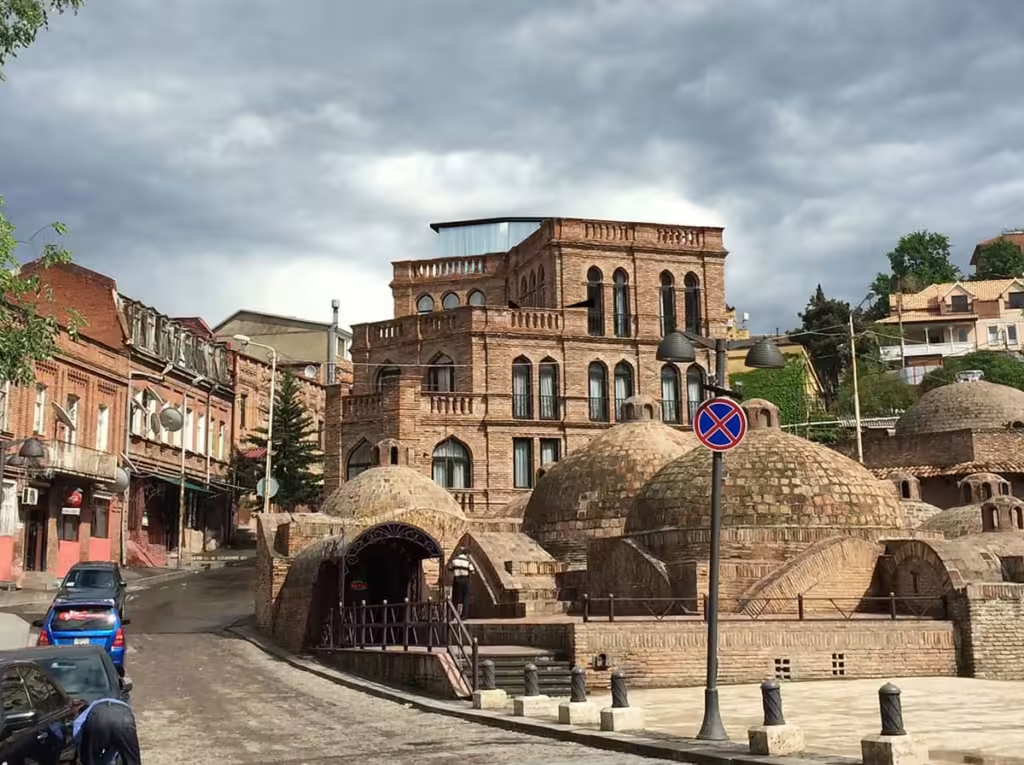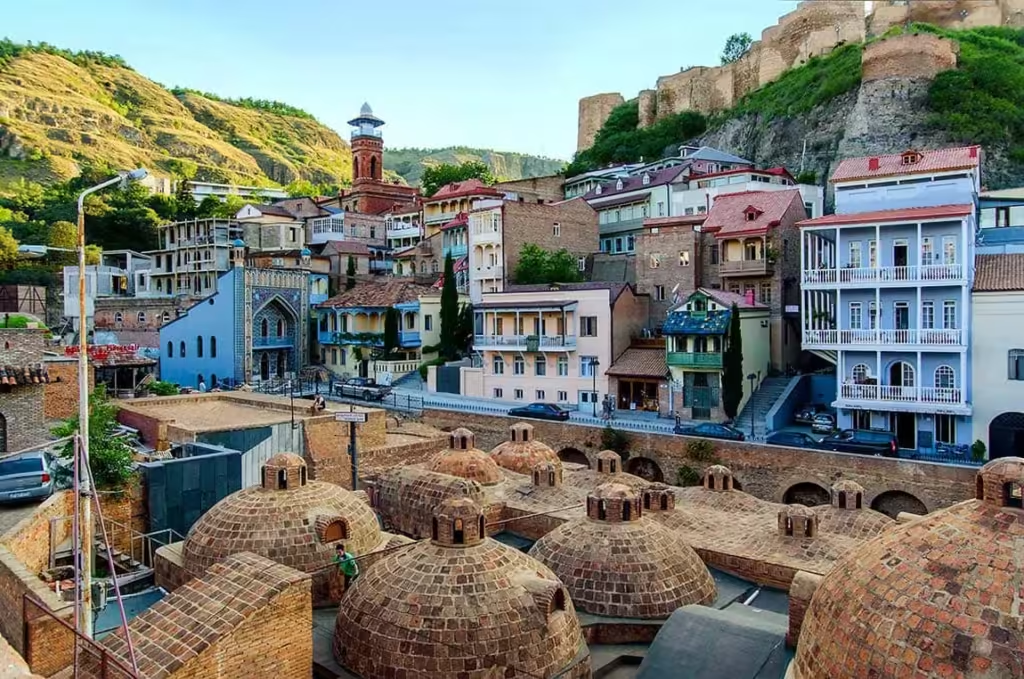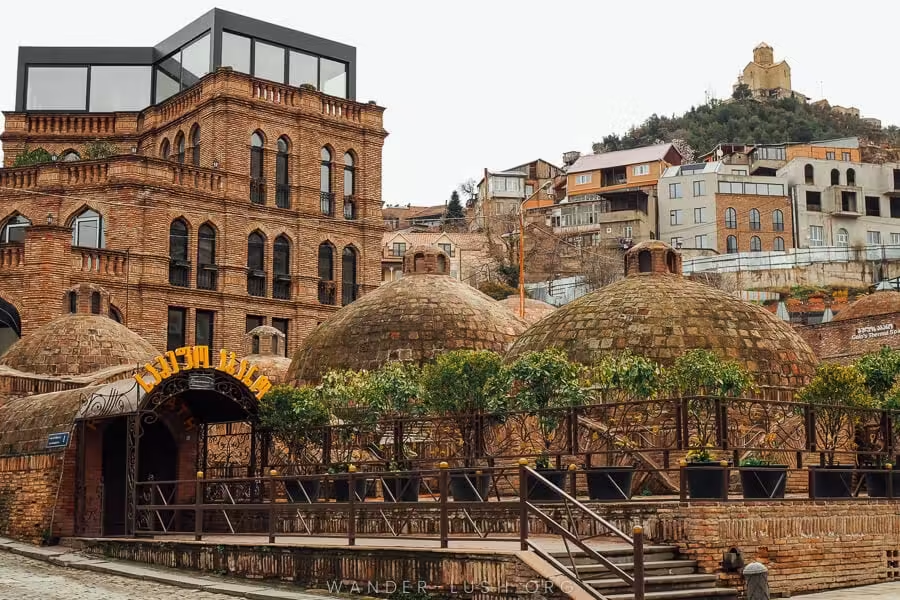Abanotubani sulfur baths in Tbilisi
Abanotubani sulfur baths in Tbilisi
Abanotubani sulfur baths in Tbilisi, the ancient district of sulfur baths in Tbilisi, is a must-visit for its historical significance and unique architecture. Here are some key details:
Abanotubani Sulfur Baths
Historical Significance:
- Origins: The baths date back to the 5th century when the city was founded. The name Tbilisi itself is derived from the Georgian word “tbili,” meaning warm, due to the area’s natural hot springs.
- Cultural Hub: Historically, the baths have been a social and cultural hub, where people gather not only for bathing but also for socializing and relaxation.
Architecture:
- Domed Roofs: The baths are easily recognizable by their distinctive domed brick roofs, which are semi-submerged in the ground.
- Ornate Interiors: Inside, the baths often feature beautiful tile work, high ceilings, and private bathing rooms.
Experience:
- Therapeutic Waters: The sulfur-rich waters are believed to have healing properties, particularly beneficial for skin conditions and joint problems.
- Traditional Baths: Visitors can choose between public baths, which are more affordable, and private rooms, which offer a more luxurious and intimate experience.
Popular Baths:
- Orbeliani Baths: Known for its stunning blue-tiled facade and luxurious interior.
- Chreli-Abano: One of the oldest and most famous bathhouses, offering a range of services from basic baths to full spa treatments.
Location:
- Heart of Old Tbilisi: Abanotubani is located in the heart of the old city, making it easily accessible and close to other major attractions such as the Narikala Fortress and the Metekhi Church.
Visiting Abanotubani offers a unique glimpse into Tbilisi’s history and a relaxing experience that has been cherished by locals and travelers for centuries.

Specifically on the eastern side of the Kura River, it is a source of hot sulfur springs that have been active for more than 700 years.

The discovery of the Abanotubani goes back to a local legend that tells the story of the fall of the King of Iberia in this place, so he discovered these hot springs.

This eventually led to the construction of a new capital, Tbilisi. These baths are considered one of the popular destinations for tourists, and visitors to Tbilisi in particular and Georgia in general.

